Key Dates
-
categories
-
Architecture
-
Interior Design
-
Space Plus
Space Design
-
Product Design
-
Communication Design
-
Graphic Design - Identity and Branding - Property - Commercial
-
Graphic Design - Identity and Branding - Property - Lifestyle
-
Graphic Design - Identity and Branding - Property - Services
-
Advertising & Marketing
-
Service & System Design
Experience Design
-
Digital Innovation
-
Web & App Design
-
Better Future
Transformative Design
-
- quick start guide
- nominate
- winners
- home
marram baba Merri Creek Parklands
Merri Creek Management Committee / Diadem | Graphic Design - Environmental
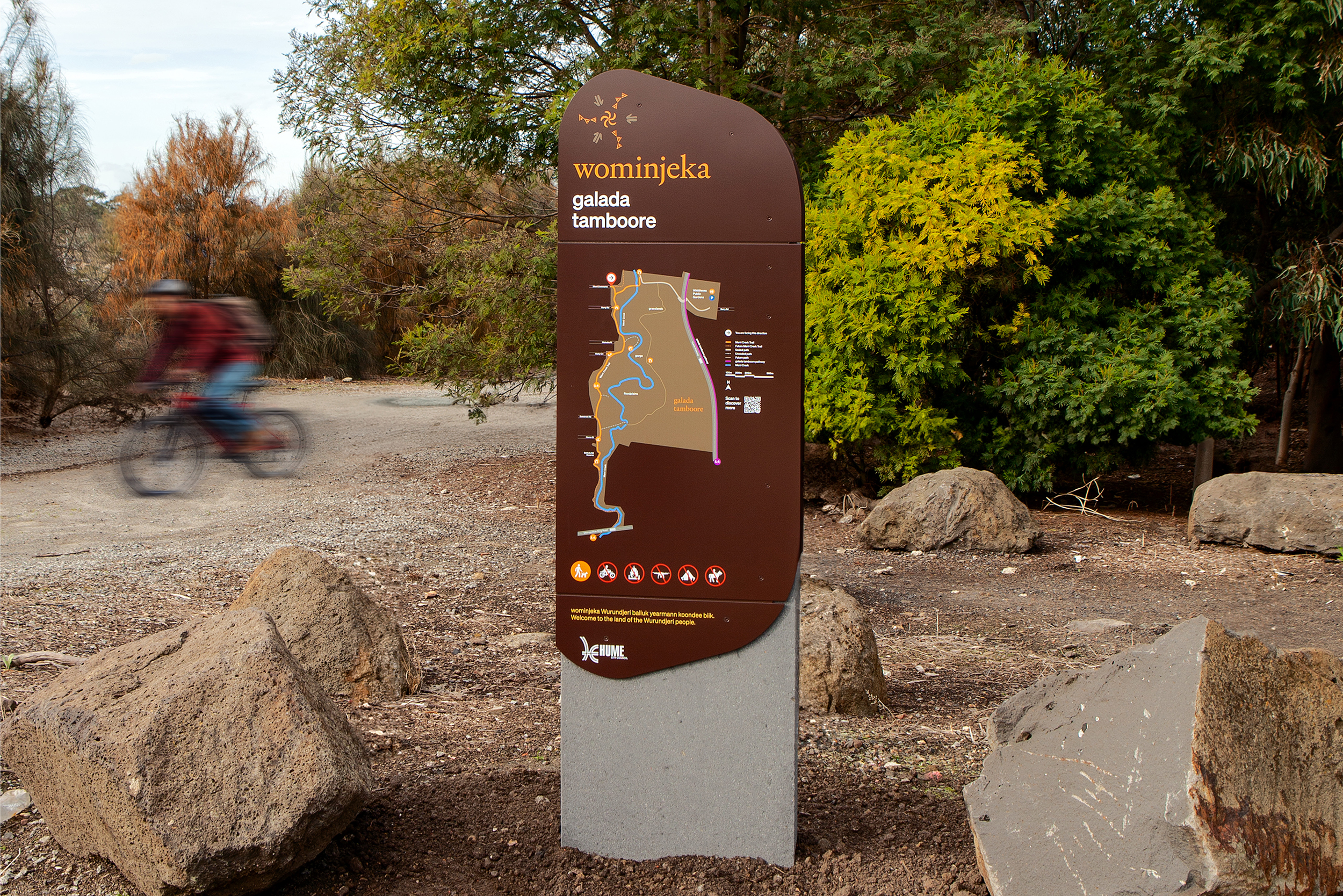
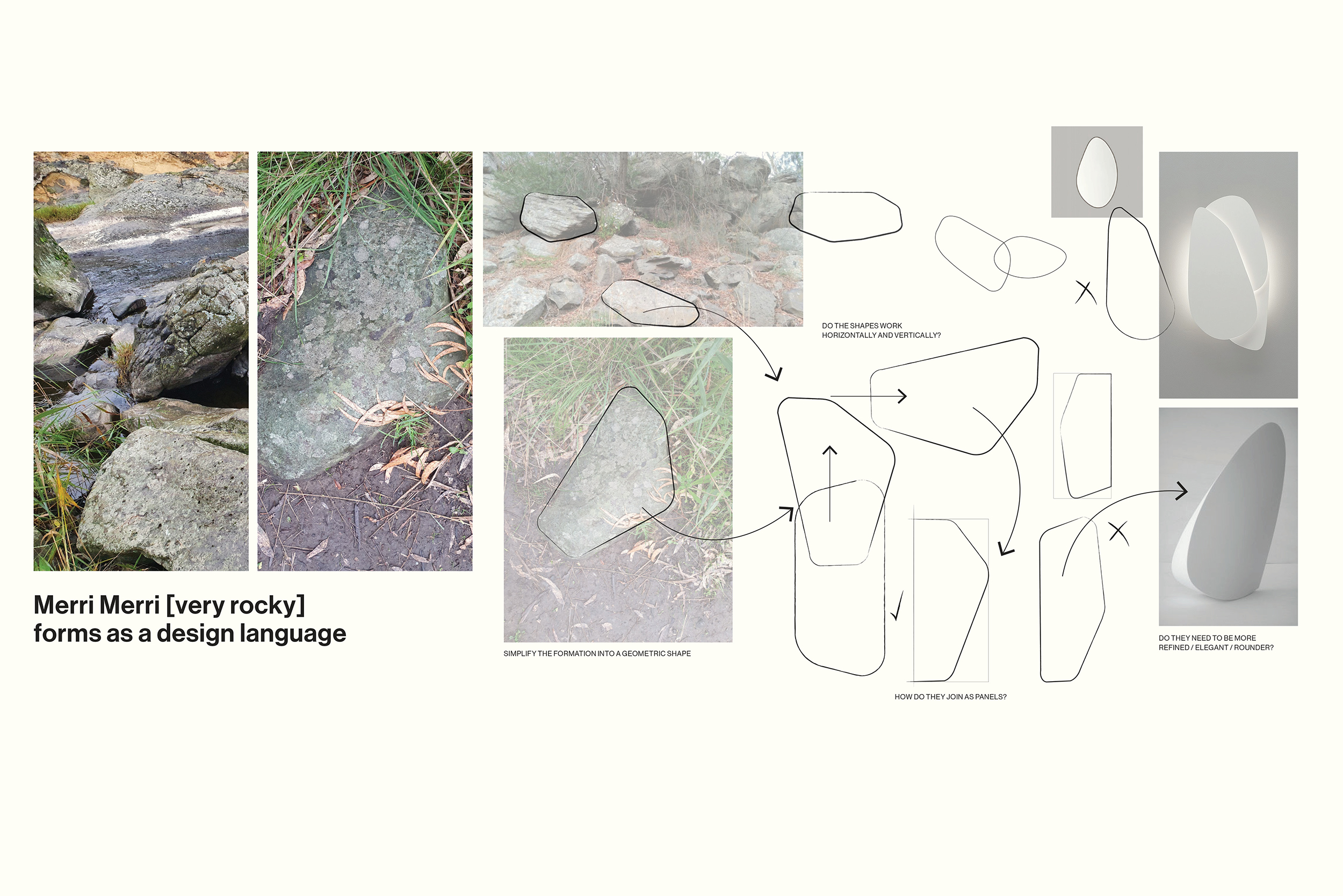
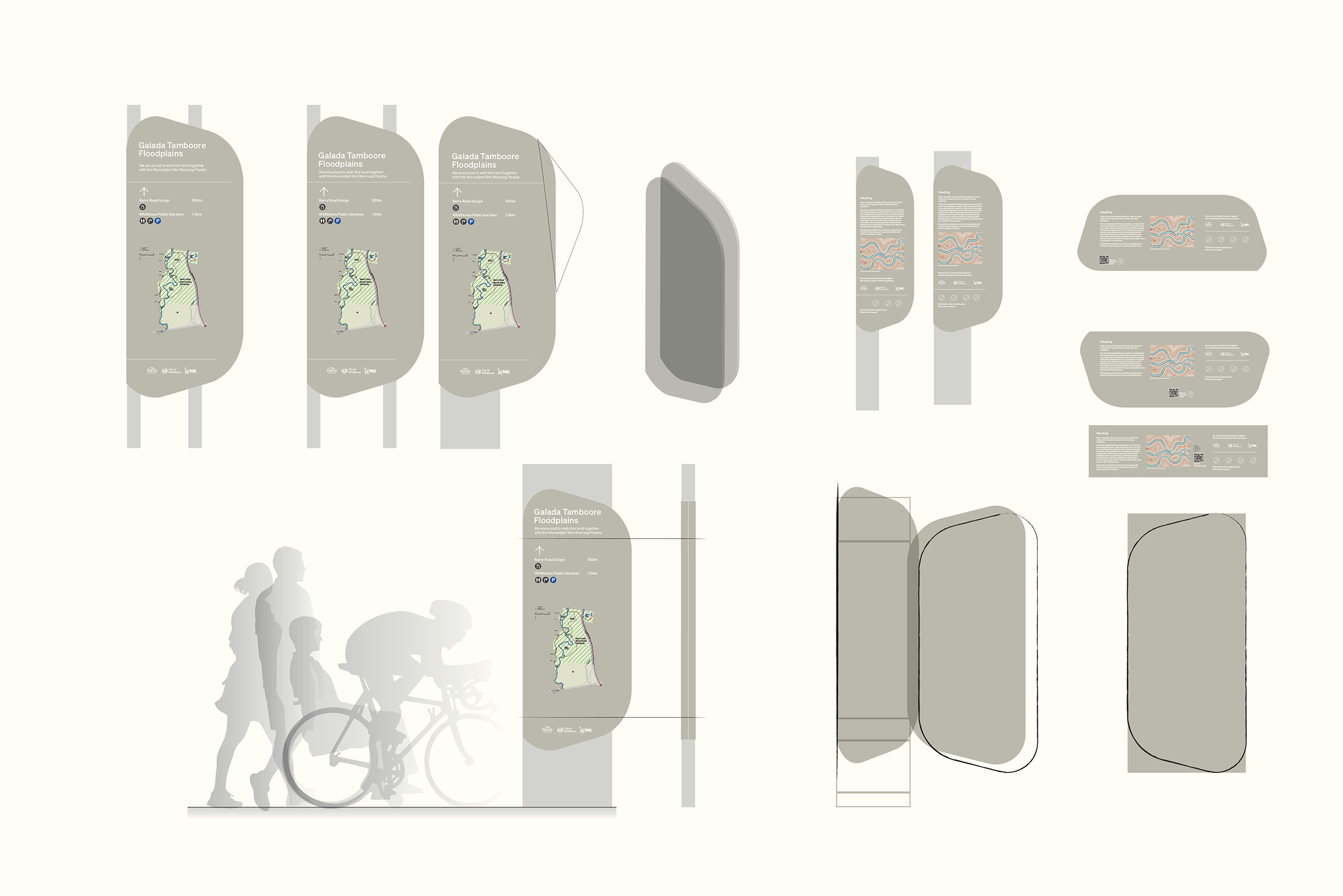
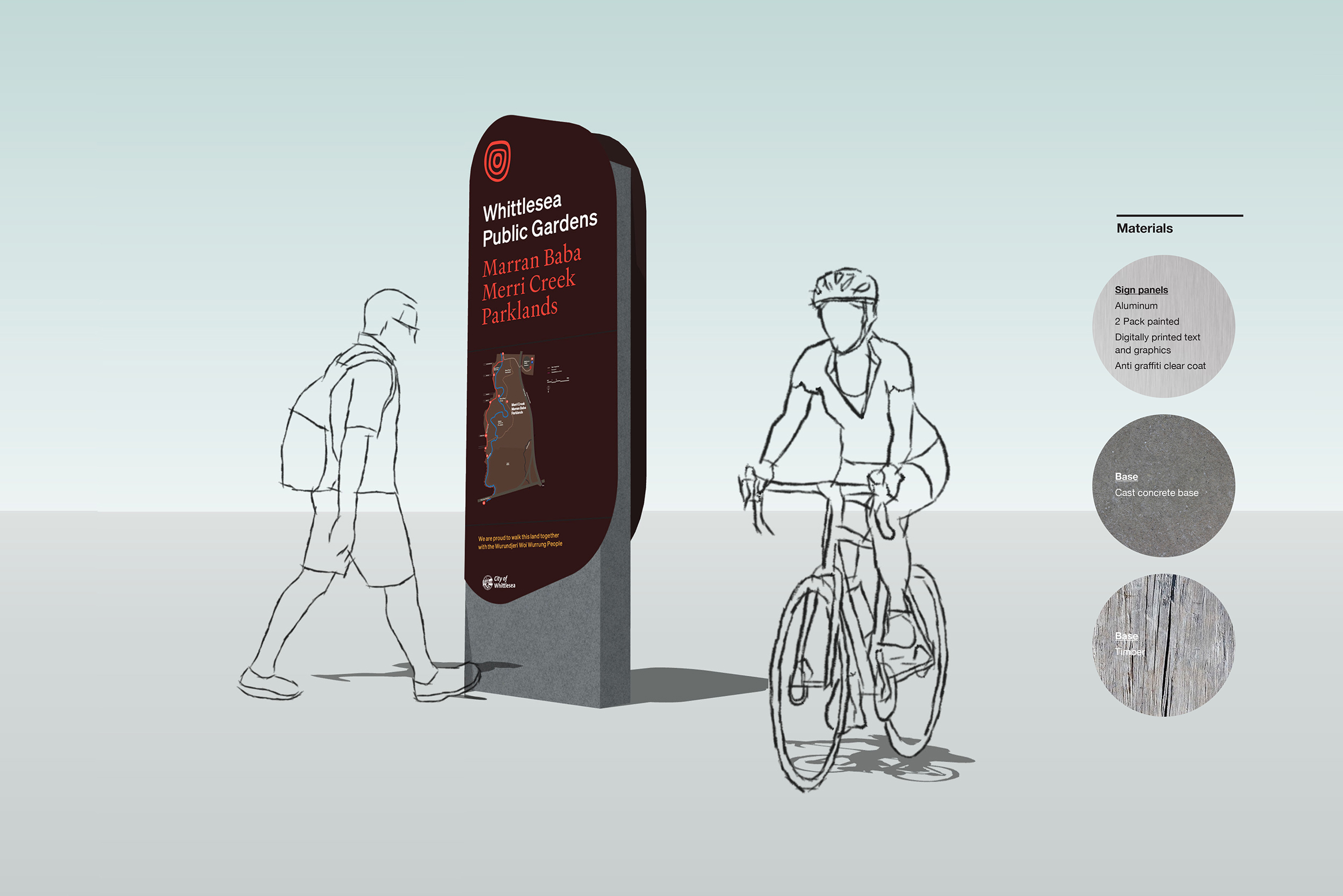
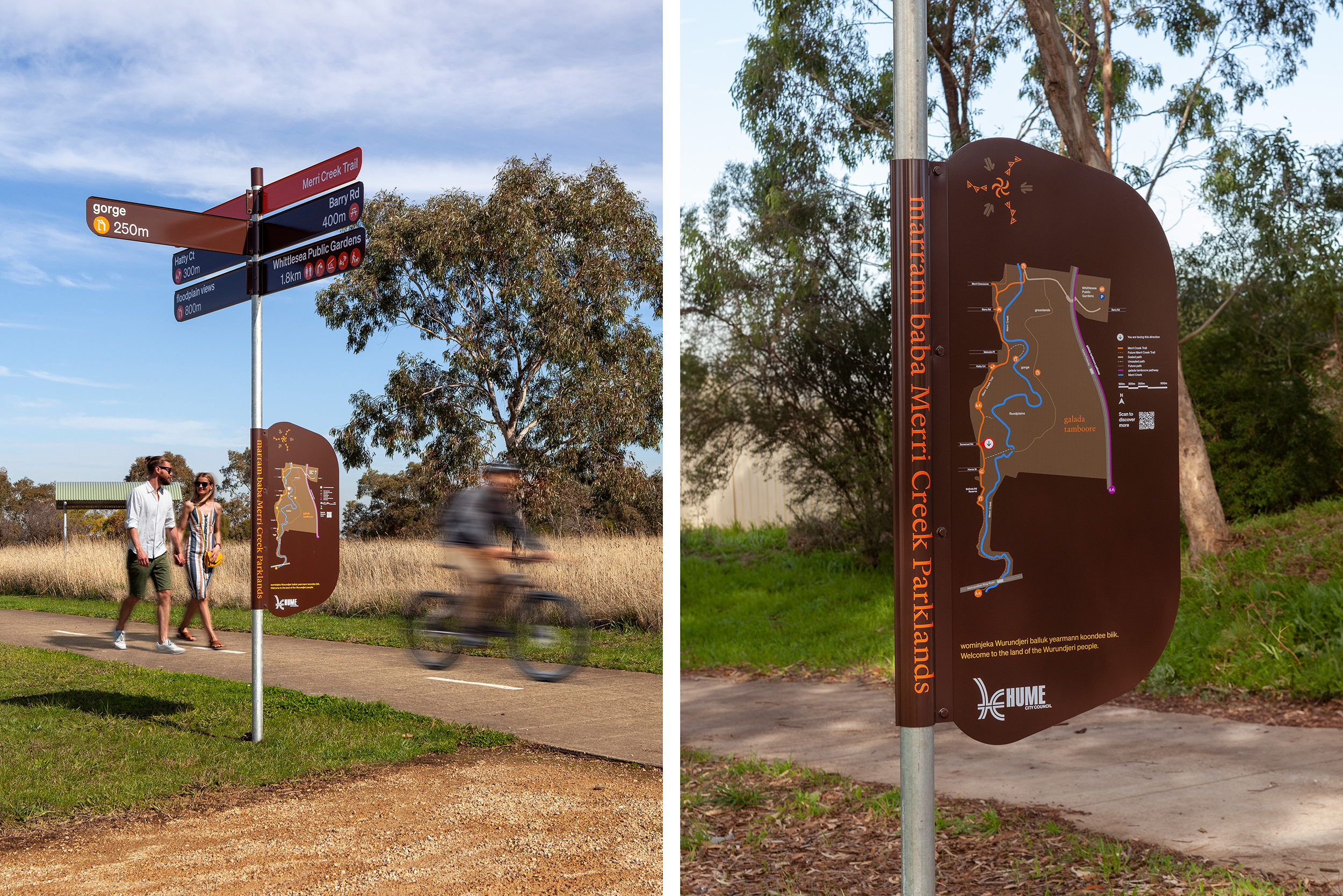
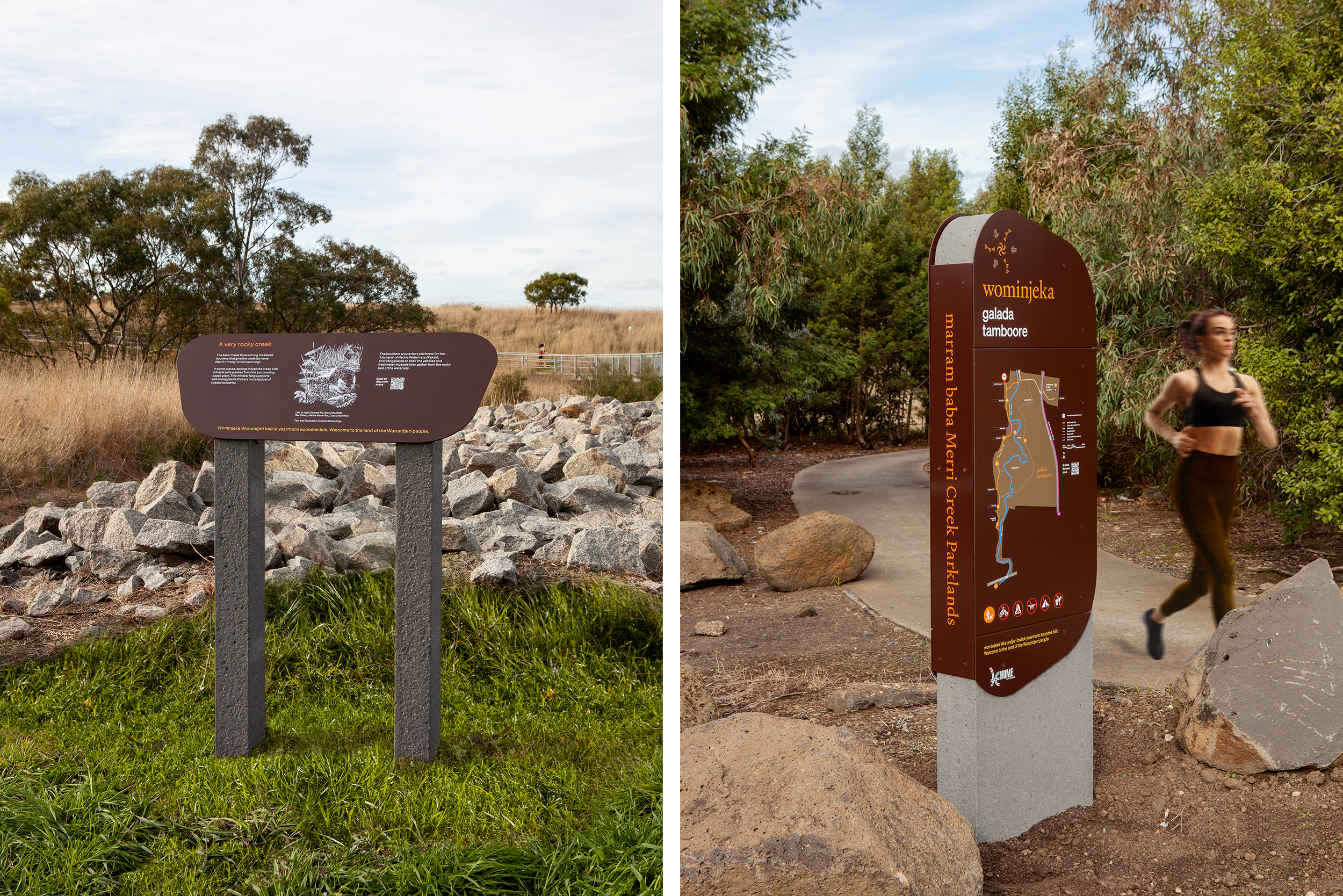
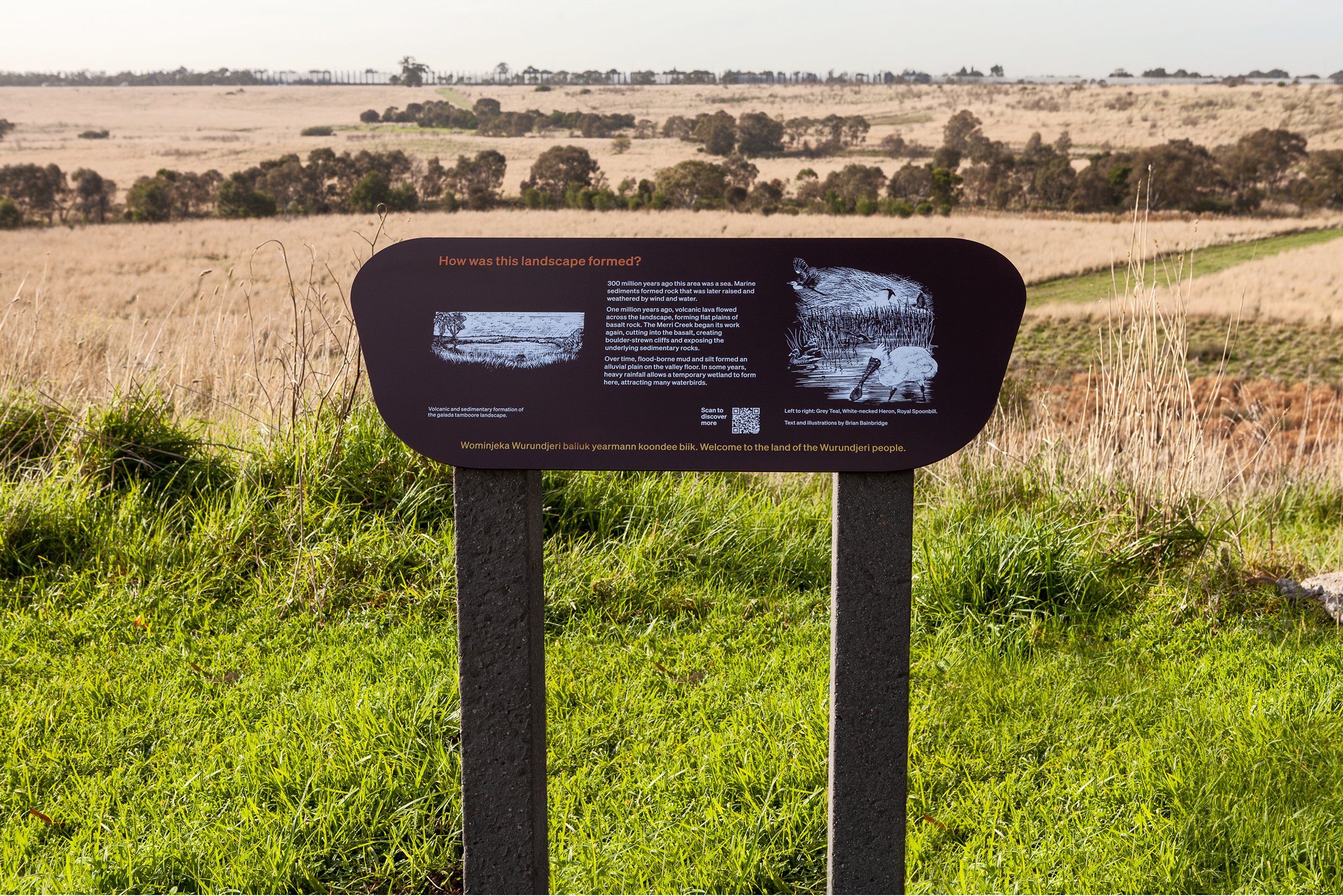
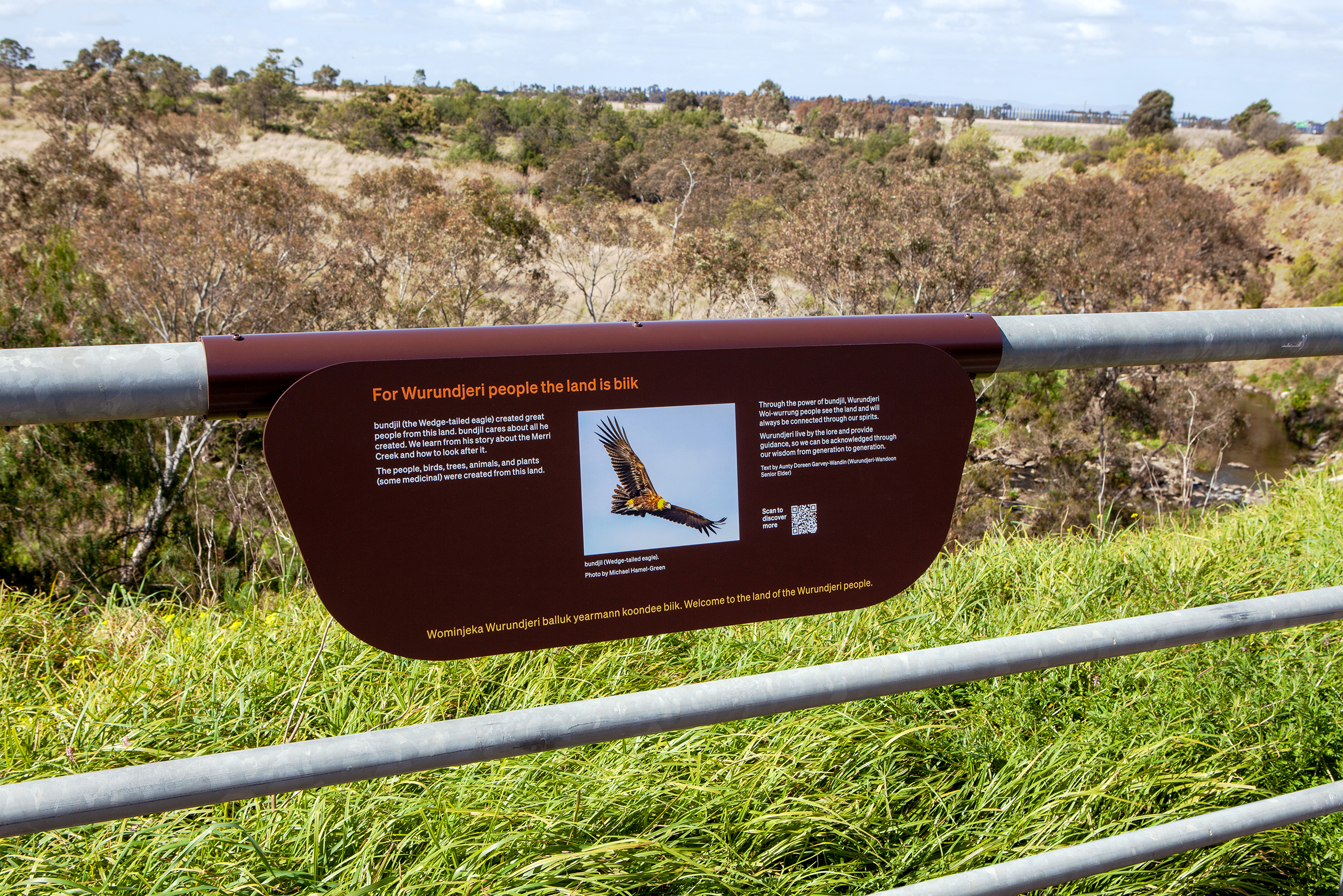
Image Credit :

Project Commissioner
Merri Creek Management Committee
Project Creator
Project Overview
The Marram Baba Merri Creek Parklands is a 2,778-hectare parkland spanning from Craigieburn to Beveridge, providing much-needed green open space for the growing communities in Melbourne’s north. The parklands protect biodiversity and cultural heritage areas and include new facilities to support walking, cycling trails, viewing platforms, and picnic areas. The new signage sets a benchmark for effective wayfinding and interpretation, drawing on Indigenous heritage and natural landforms.
Endorsed by the Wurundjeri Woi-wurrung Elders, the Traditional Owners of the land known as marram baba – meaning ‘body of mother’ – the signage includes a welcome in Woi-wurrung and a trail icon designed by Lewis Wandin-Burstall. Four signs feature text provided by Wurundjeri Elder, Aunty Doreen Garvey-Wandin. The design embodies core wayfinding principles, providing relevant information at the right time in an easily understandable manner, enhancing the experience of being ‘on Country’.
Team
Louise Waters - Senior Design Manager Matthew May - Design Director Todd Dawson - Technical Director Paul Sparks - Sustainability Director Sung Chua - Senior Designer Adrian Chan - Communication Designer
Project Brief
This project involves the development of wayfinding signage for the expanded public parklands in Melbourne's outer northern suburbs. These parklands aim to preserve biodiversity and cultural heritage while offering new facilities to promote community health and wellbeing. These facilities include walking and cycling trails, viewing platforms, and picnic areas.
The new signage for Stage 1 is designed to guide visitors through the parklands, facilitating a gradual expansion planned until 2050. The wayfinding system has received endorsement from the Wurundjeri Woi-wurrung Elders, the Traditional Owners of the land, who refer to it as marram baba, meaning ‘body of a mother’.
The signs feature a welcome message in Woi-wurrung, along with a trail icon created by Lewis Wandin-Burstall. Additionally, four signs include text from Wurundjeri Elder, Aunty Doreen Garvey-Wandin. The goal of these signs is to provide clear, easy-to-understand information, enhancing the experience of being ‘on Country’ and fostering a deeper connection to the land.
Project Innovation/Need
This project's innovation lies in its integration of cultural heritage and natural landscape within the wayfinding system. The signage provides navigational assistance and serves as an educational tool, telling the story of the Wurundjeri people and their connection to the land.
This approach is essential for preserving and promoting the cultural heritage of the Traditional Owners. The project was driven by the need to create a signage system that embodies the Wurundjeri culture and harmonizes with the natural surroundings. The non-rectilinear design of the signs, inspired by the forms of rocks along the creek, reflects the organic essence of the landscape.
This design innovation ensures that the signage is functional and aesthetically meaningful, contributing to the overall identity of the parklands. Using local materials and colors further enhances this connection, ensuring that the signs complement the environment rather than detract from it.
Design Challenge
The design challenge for this project was multifaceted, requiring the creation of signage that reflects Wurundjeri culture, integrates seamlessly with the landscape, and meets practical management needs. One of the primary challenges was to develop a non-rectilinear sign form inspired by the rocky landscape, which also needed to be practical for manufacturing and maintenance.
The project team saw this challenge as an opportunity to incorporate storytelling into the design, allowing the signs to tell the place's story. This was particularly important in preserving the Wurundjeri language, where language and culture are deeply intertwined. The term ‘merri-merri,’ meaning ‘very rocky,’ inspired the rock-like forms of the signs.
These forms needed to be refined to house wayfinding information, maps, and interpretive content, ensuring they were functional and manufactured using standardized methods and sheet sizes.
Balancing these practical considerations with the need for a unique visual identity that spoke to Place was a critical aspect of the design challenge.
Effectiveness
The effectiveness of the wayfinding signage can be measured by its ability to guide visitors through the parklands while enhancing their understanding and appreciation of the cultural and natural heritage of the area. The signs have been designed to provide relevant information at the right time, making navigation easy and intuitive.
The incorporation of the Wurundjeri language and cultural elements ensures that visitors are not only informed but also educated about the significance of the land they are exploring. The use of colors and materials that blend with the surrounding landscape helps the signs to complement their environment, creating a cohesive visual identity for the parklands.
Practical considerations, such as graffiti mitigation and ease of maintenance, have also been addressed, ensuring the long-term durability and sustainability of the signage.
Overall, the wayfinding system creates a lived experience that reminds visitors of what it means to be ‘on Country,’ fostering a deeper connection to the land and its heritage.
Graphic Design - Environmental
This award celebrates creativity and innovation in the intersection of communication design and the built environment, and is concerned with the visual aspects of wayfinding, communication identity and brands, information design and shaping the idea of place. Consideration given to clarity of communication and the matching of information style to audience.
More Details

